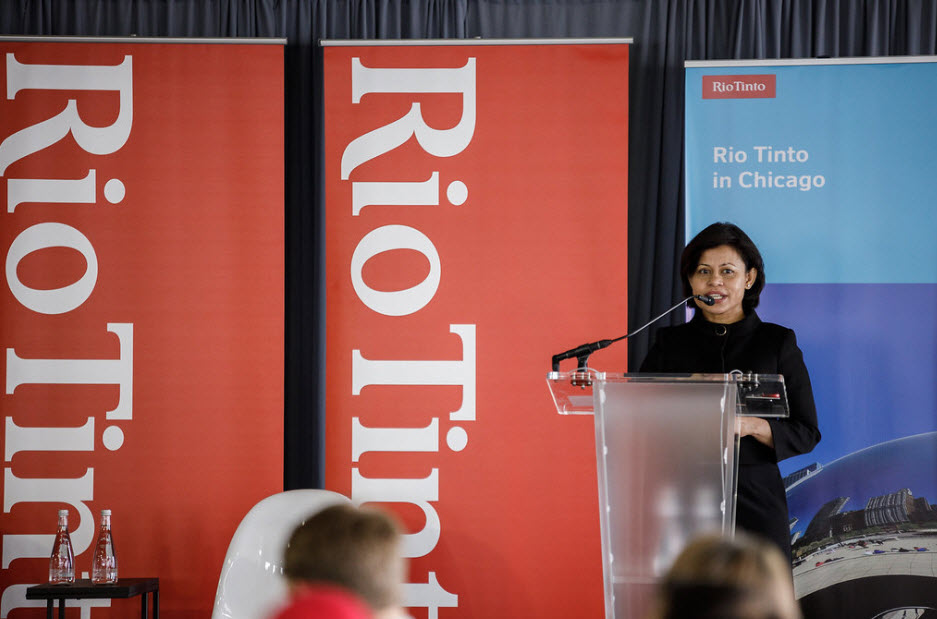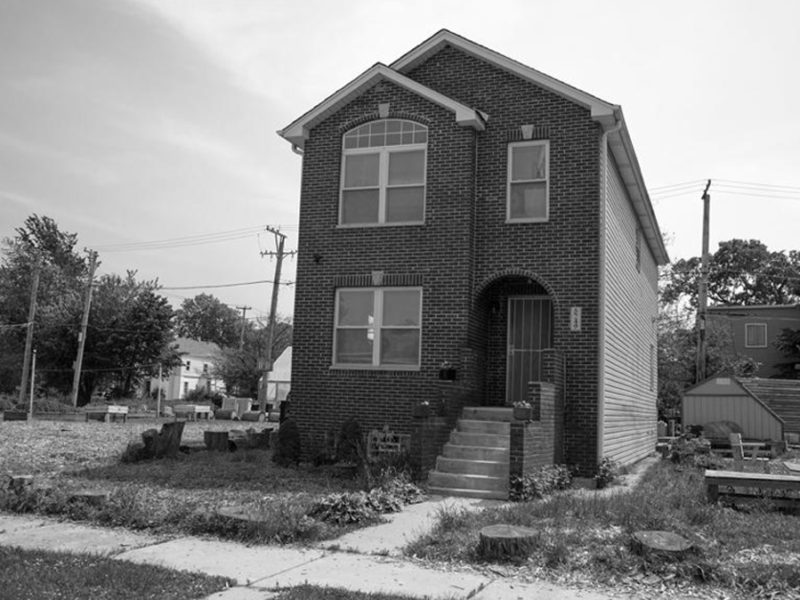
Shifting Terrain: Rio Tinto and the Art of Adaptation
COME SEE FOR YOURSELF HOW TECH INNOVATIONS ARE REIMAGINING THE FUTURE OF ONE OF THE WORLD’S OLDEST INDUSTRIES WITH THIS ENERGIZING EXPERIENCE LED BY RIO TINTO AND EX3 LABS ON OCT. 16 AT 11AM.
The topography of global market conditions are in a state of flux—more so than usual. Climate concerns and unpredictable geopolitical forces have contributed to conditions of uncertainty.
But not for Rio Tinto.
In the world of metals and mining, the unsteady terrain of global economic and geopolitical influences are driving a new wave of innovation. We sat down with our partners at Rio Tinto to talk about how situations of seeming precarity can rather serve as breeding grounds for adaptation, renewal, and fresh ideas.
Chicago Ideas (CI): Tell us a little about your role at Rio Tinto.
Paramita Das (PD): I lead Rio Tinto’s marketing and market development efforts. I opened the Rio Tinto’s Commercial office in Chicago in 2018, whereby we operationalized the global strategy to consolidate our commercial activities into one location to be closer to our customer base. Chicago was chosen because of its talent base, long commodity trading history, and obvious geographical benefits. Our other key locations internationally are Singapore, Shanghai, Tokyo, Frankfurt, Seoul, and Mumbai, among others.
CI: You hosted a Partnership event in June here in Chicago. Tell us a little bit more about that, including the key takeaways you hope attendees walked away with.
PD: America is an important market for us, and our annual partnership event is an important opportunity for us to connect with our customers, suppliers and stakeholders. Rio Tinto’s view is that the more we understand each other, the better we can work together and achieve the best outcomes for all. Our goals are laser-focused on making human progress possible through our metal and minerals, and that can only be achieved through the right partnership model.
I hope all our stakeholders went away feeling more connected than ever to us, with a deeper understanding and insight on topics that have direct impacts on our business, such as sustainability, trade and how markets are evolving. Overall, we hope they had an enjoyable and memorable time with us and our team in Chicago. We’re looking forward to seeing them again next year.
CI: Why are events like this integral to the fabric of an organization like Rio Tinto?
PD: We regard our customer and supplier relationships as being more than just transactional. Having a deep relationship with them (and a deep understanding of their needs) allows us to solve their problems and create value (both for us and them). It is about customer-centricity: we want to be in a position to help our customers and the supply chain succeed. It is about innovation: we want to focus on the right things for our customers for innovation and technology—we are market leaders in this space. And it is ultimately about partnership: we want to succeed with and through the success of our customers and external stakeholders. And for all the three objectives, we cherish the time our stakeholders spend with us.
CI: How is the current state of global affairs affecting the way minerals are traded around the world? And how is Rio Tinto addressing this?
PD: Our CEO J-S Jacques recently spoke at a conference in Spain about the new era of complexity that companies like Rio Tinto are facing, particularly due to growing geopolitical tensions, changing economic dynamics, technological disruptions, and the higher societal expectations we are facing. His conclusion was that the industry needs to adapt and adapt fast. Rather than trying to summarize all the points here, the full speech is available on our website.
CI: What sort of effect are concerns for the environment and sustainability having on the way Rio Tinto is approaching the industry and business?
PD: Rio Tinto regards the materials we produce as essential to human progress. And we must produce them responsibly. Overall, we want to be part of the solution to help address the climate change challenge and our aim is to make sure our business, and those in our supply chain, continue to deliver economic and social benefits in the short, medium and long term, as we assist in the transition to a low-carbon future and responsible production.
Our operations are energy-intensive, and we are taking action to improve productivity and reduce emissions.
Aluminum is one area where our innovation is making a difference. Our low-carbon aluminum – RenewAl™ – has a carbon dioxide footprint three times lower than the industry average. For more than 30 years, we have partnered with the automotive sector to find ways to use aluminum in car frames and bodies, making cars lighter weight, more fuel-efficient, and increasing safety performance.
Additionally, earlier this year, our Utah Copper mine was transitioned to renewable energy. Rio Tinto is collaborating with the Utah government, local communities and Rocky Mountain Power to reduce its carbon footprint at its Kennecott Utah Copper operation by closing its coal power plant and pairing the operations electricity needs with 1.5 million megawatt-hours of renewable energy certificates. The change will reduce the annual carbon footprint associated with the operation by over one million tonnes CO2. The move will allow Rio Tinto to offer customers copper, gold, and silver with a reduced carbon footprint.
And lastly, again earlier this year, we announced that Rio Tinto is supporting the World Bank launch of a climate-smart mining facility. Another step in the right direction.
CI: When you think of the markets Rio Tinto is active in, why is a presence in Chicago important?
PD: We opened the Chicago office to be closer than ever before to our customers, ensuring stronger connections to them and markets, and helping us be more agile, aligned and adaptable to challenges and changes in the American market.
CI: What does the future hold for Rio Tinto?
PD: The metal and mining industry is changing rapidly. There are the evolving expectations of our stakeholders, who rightly hold us to ever-higher standards around our business practices. Added to this are shifting global operating conditions, and issues such as climate change and resource scarcity. At the same time, we are seeing exciting breakthroughs in science and technology that continually expand the boundaries of the possible. The mining industry must adapt to these challenges to survive and thrive – though our ambition reaches much further.
Watch this space. For our sustainably focused audience, look out for our breakthrough R&D work on ELYSIS (whereby we will emit oxygen while making aluminium) or our recently announced partnership with Nespresso





